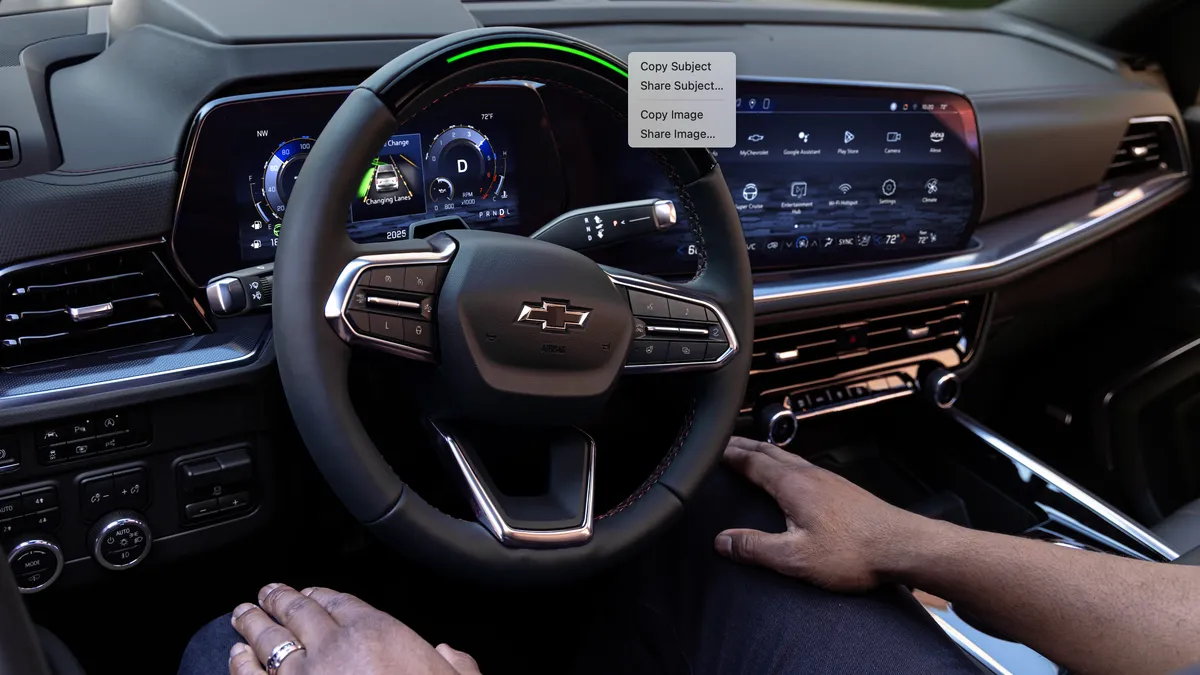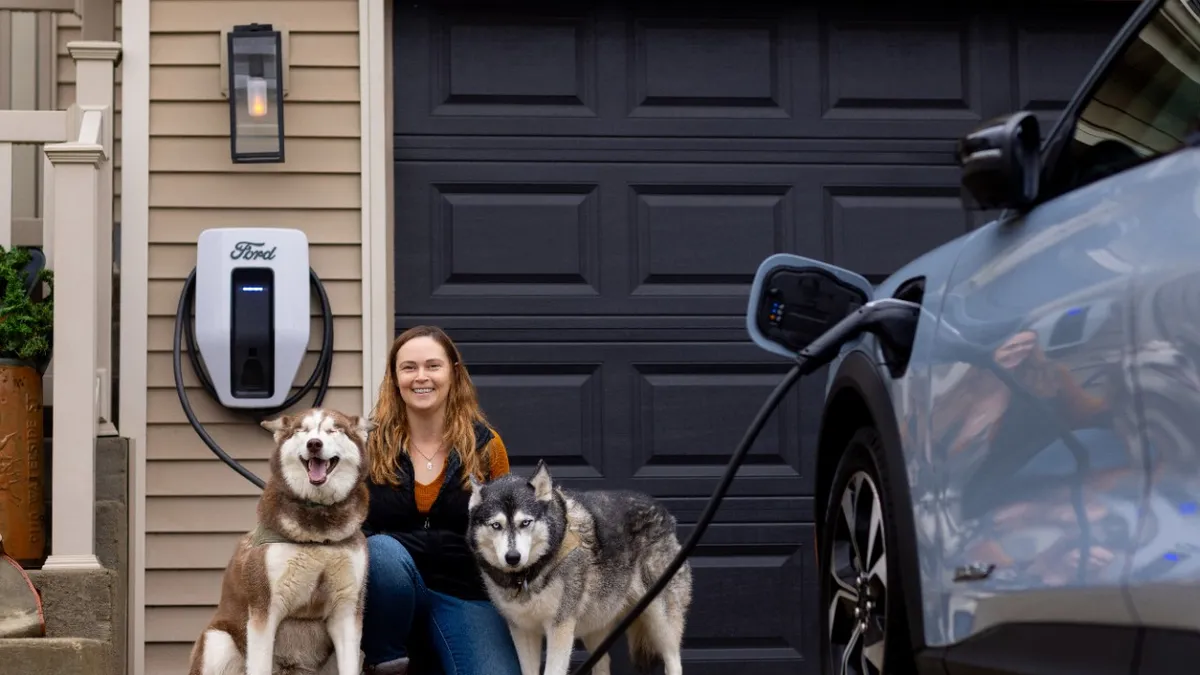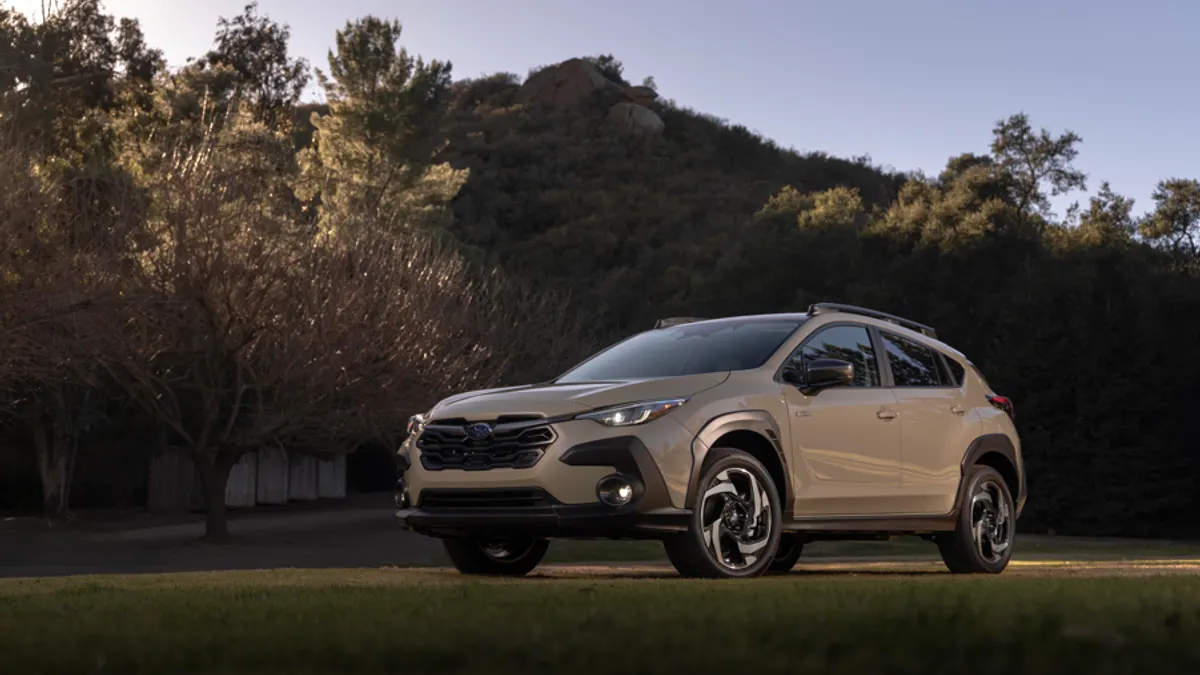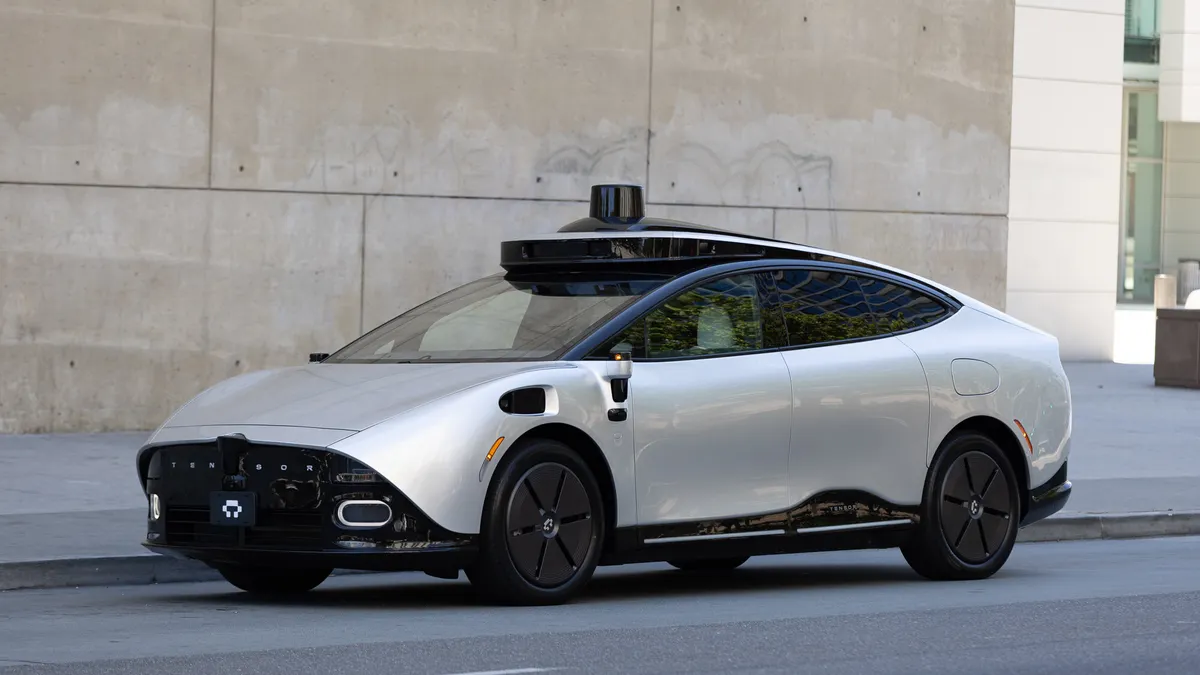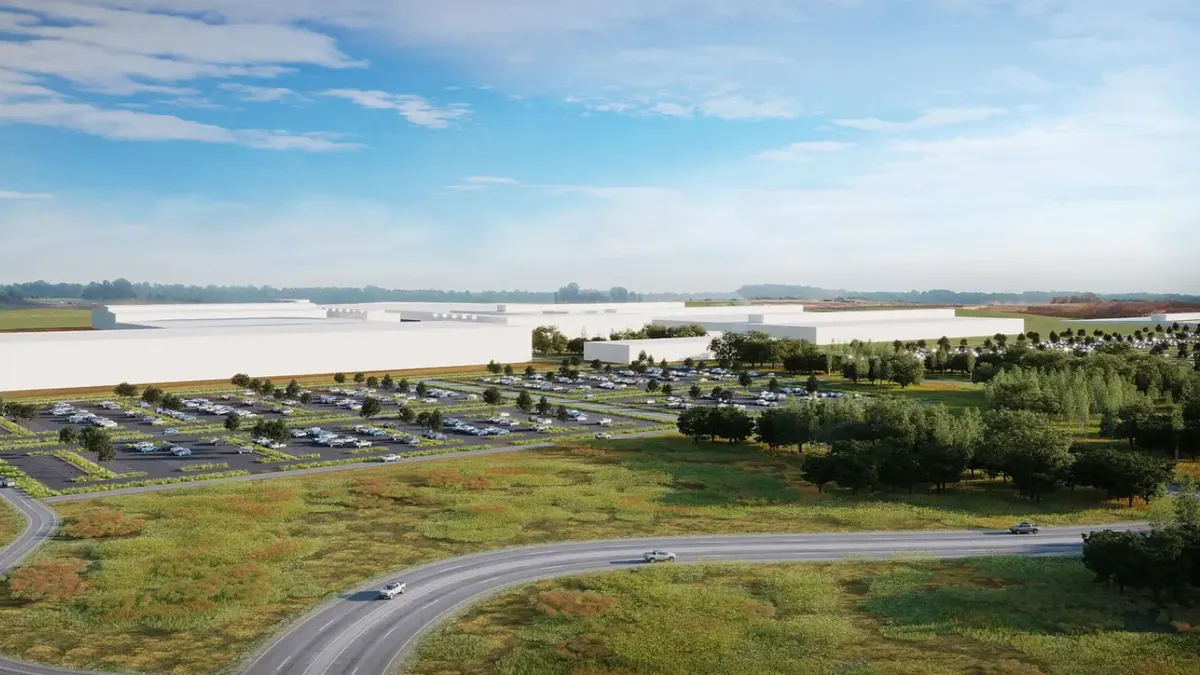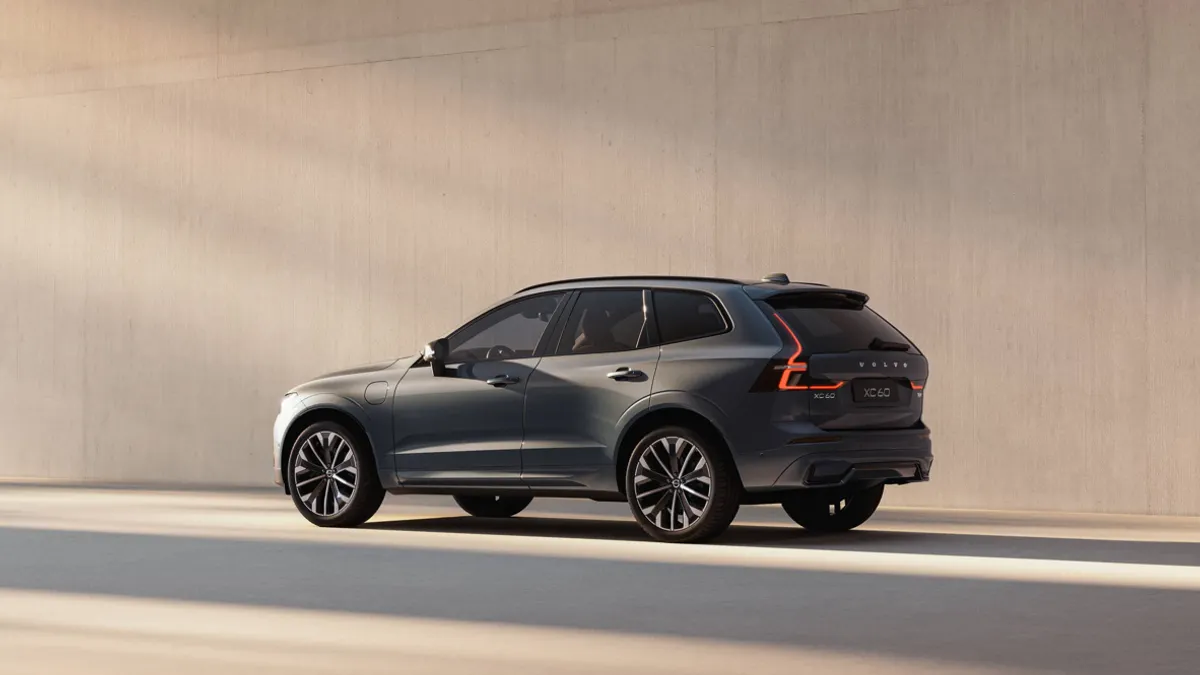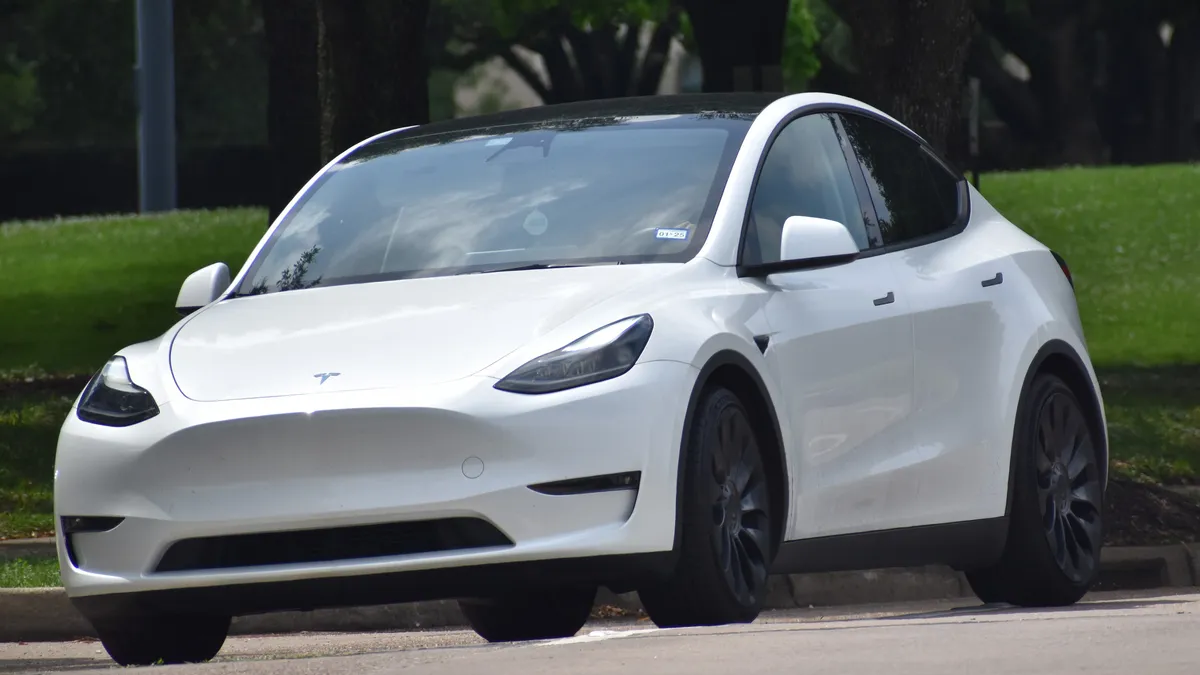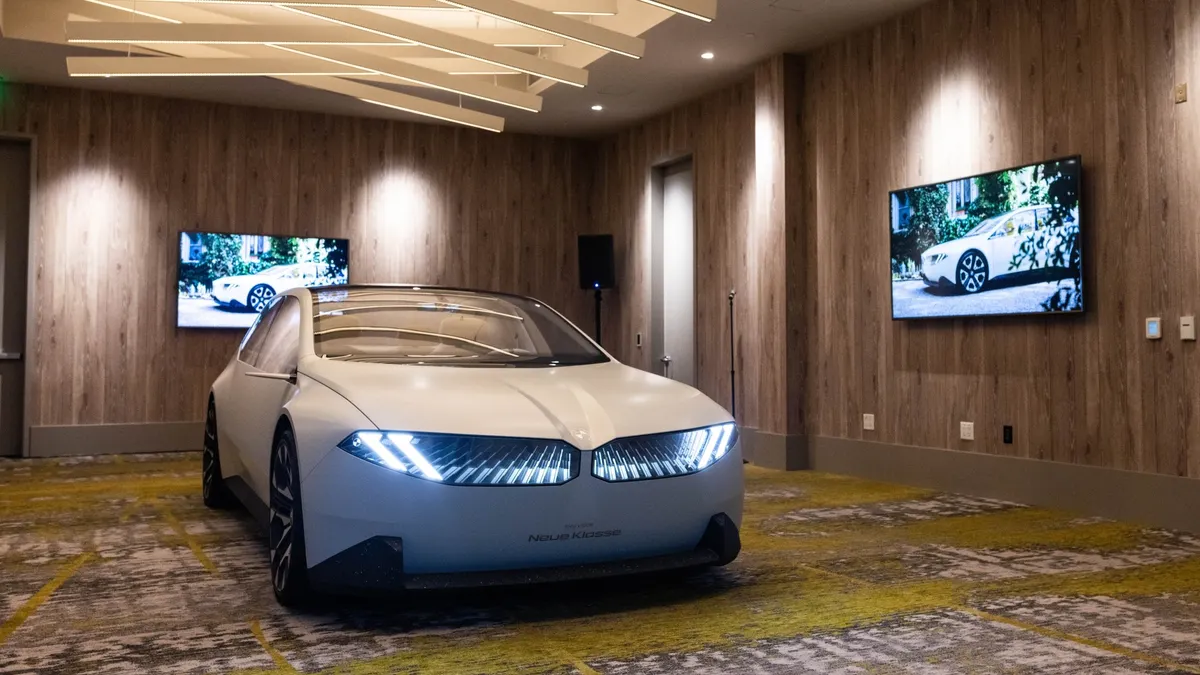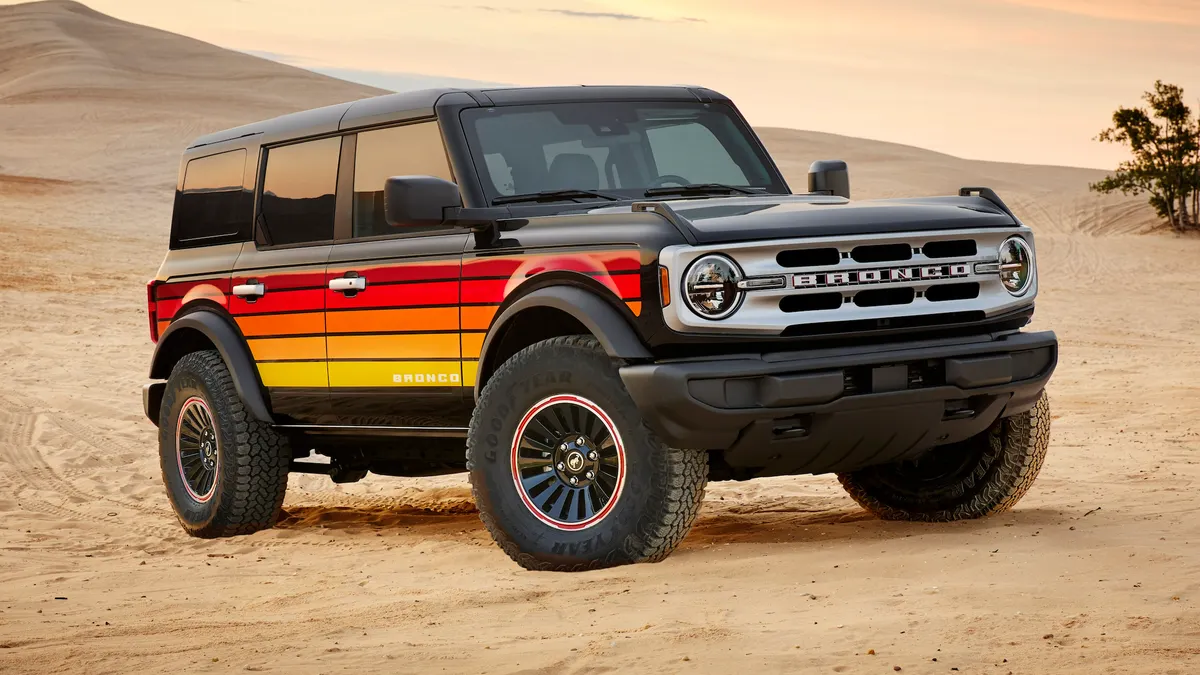As automotive market trends continue to shift, many global brands are re-evaluating their product offerings in 2025.
Whether it is Honda, Nissan and Mitsubishi's hopes for a deal or the rapid growth in the hybrid vehicle segment, automakers are trying to stay competitive each year without losing sight of their long-term electrification goals. However, they still face many headwinds, including global competition from China-based brands, regulatory uncertainty, and slower-than-expected electric vehicle adoption in 2024.
Altogether, the combination of trends may change the U.S. market further in 2025, experts told Automotive Dive. Here's a look at five of the top trends they highlighted.
1. The growth of the hybrid vehicle segment
As EVs sales cool across the industry, building more eco-friendly hybrid vehicles can help automakers meet tighter emission regulations, while still appealing to buyers seeking affordability combined with improved fuel economy.
Although the incoming Trump administration has hinted at ending federal EV tax credits, which have helped to boost sales, automakers are not likely to lose sight of their long-term electrification goals after investing billions of dollars in production retooling, including building new joint venture battery plants. In the meantime, automakers can offer a product mix of both hybrid and fully electric models as the EV market matures.
“We've seen shifts in product pipelines as automakers respond to consumer demand for more hybrid vehicles and prepare for potential changes to emission regulations, said Stephanie Valdez Streaty, Director, Industry Insights at Cox Automotive in the company’s forecast call. “Looking ahead to 2025, we expect continued growth in alternative powertrains, reaching one out of four sales.”
Some hybrid models are already a hit with consumers. The three best-selling hybrid vehicles in the U.S. in 2024 were the Ford F-150 hybrid, Toyota RAV4 and Honda CRV, according to Business Insider.
“These vehicles not only offer consumers more options, but also serve as a crucial gateway to pure electrification,” said Valdez Streaty.
2. Could lower battery costs spur both profits and adoption?
Decreasing battery costs combined with new battery chemistries could lead to the launch of lower cost EVs in the next few years, analysts say.
In Nov. 2023, lithium-ion battery pack prices reached a record low of $139/kWh, and have declined another 20% since then to a record low of $115/kWh, according to Bloomberg NEF. But according to an October 2024 report from Goldman Sachs, battery costs could fall towards $80/kWh by 2026, a level where EVs would achieve ownership cost parity with ICE vehicles in the U.S. — without any subsidies.
“In 2025, new EV sales will continue to rise with markets expected to tip over 10%,” said Valdez Streaty during Cox Automotive’s forecast call on Dec. 17. “The introduction of new models, improved charging infrastructure and advancements in battery technology will help drive this continued adoption.”
In addition to pure EVs, hybrid vehicles continue to account for a growing percentage of total vehicle sales, and automakers are responding with the launch of new models. However, although falling battery costs have made some EVs more affordable, purchase intent remained largely unchanged in 2024, according to Deloitte data.
“There's only about 5% of U.S. consumers that are most intending on buying a full BEV as their next vehicle, " said Deloitte’s Automotive Research Leader Ryan Robinson. “And that's pretty much flatlined from where it was last year.”
3. Will massive public charging investments still be necessary?
As hybrid sales grow and the driving range of EVs increases due to improved battery chemistries, the billions of dollars in investment commitments to build out new EV charging infrastructure in the U.S. may be less of a factor holding back adoption.
“We can argue whether that justifies the amount of investment that's going into putting all the charging infrastructure in place that has been going on over the years,” said Robinson.
Robinson says that some of the billions of dollars allocated to build more EV charging infrastructure may be better used for other incentives, such as covering the cost of installing residential chargers, where most EV drivers currently power up their vehicles.
“We know the lack of public charging infrastructure does come up as a barrier to EV adoption, but at the same time, you know, you can't really get around the fact that eight out of 10 of those people are going to be charging at home and essentially leaving a driveway every day with a full tank of fuel,” he said.
Some automakers have tested alternatives. Ford Motor Co., for example, has extended its free home charger promotion through March 31 on the purchase or lease of a new EV, saying it helped it achieve its best-ever electric vehicle sales in Q4.
“It may be more beneficial to target some of those funds that have been traditionally earmarked for public charging infrastructure for helping people that are genuinely interested in buying an EV,” said Robinson. “To make it easier for them to install a charger at home.”
4. Could China’s automakers reshape global markets?
Many global automakers, including General Motors, Ford Motor Co. and Volkswagen, have relied on the China auto market, which is the world’s biggest, for steady profits year over year. But with ongoing price wars and growing EV sales in China by domestic brands, overseas automakers are facing fierce competition and an uphill battle to maintain their market share.
“The Chinese market is so hyper-competitive, the price war that we've seen play out there over the last 18 months to two years has just been ferocious,” Robinson told Automotive Dive. “You have to have the products, the compelling products at the price point that Chinese consumers expect.”
As more China-based automakers launch new electrified, connected and software-based vehicles that are appealing to tech-savvy car buyers, it may further erode the market share of global legacy automakers. During GM’s August 2024 earnings call, CEO Mary Barra referred to the China market as a “race to the bottom” after reporting big losses in the market in 2024.
5. AI could boost autonomous driving features
Along with the ongoing rollout of Tesla’s highly controversial Full Self-Driving feature, other automakers continue to develop their own hands-free driving technology including GM, Ford, Lucid Group and Rivian.
The Super Cruise and BlueCruise hands-free highway driving features developed by GM and Ford currently work on hundreds of thousands of miles of roads in the U.S. But experts say continuous improvements in AI, hardware and vision technologies is likely to make these types of systems more robust and safe in the upcoming years, which could increase their usage.
“I think we're getting to a precipice where we're going to get much more widespread adoption and application of the technologies,” said EY Americas Automotive Sector Leader Steve Patton.
Patton also cited the continued advancements in AI-powered automated driving systems, which may support the rollout of more self-driving tech by automakers this year and beyond. He predicts that most consumers will be introduced to more advanced automated driving technology gradually through more advanced driver assist systems, such as lane keep assist and automatic emergency braking and automatic lane change features.
“But I do think this [2025] could be a year of significant advancement in passenger-based autonomy,” Patton said. “Once we get some practical use of AI into maybe some of the autonomy algorithms, I think that's going to continue to just elevate the capabilities and the safety of the technology.”
The launch of more advanced automated driving features could also lead to licensing opportunities for companies like Waymo and Nuro, which might allow more automakers to offer these features without significant investments in research, development and testing.



